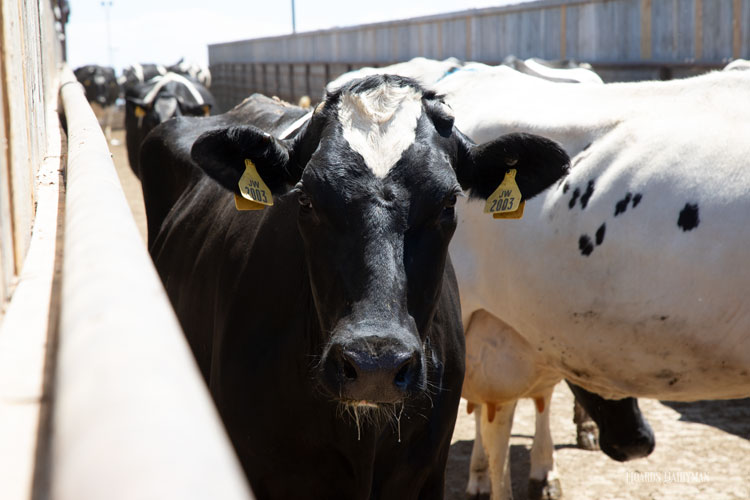
What’s the best heat stress abatement practice?
Standing? No. That’s not the correct answer, but if you watch a pen of cows that are experiencing heat stress, it sometimes appears to be their most natural instinct.
Cows stand when it’s hot in an effort to lower body temperature by exposing more of their hair coat to airflow. The elimination of contact with the insulative nature of pretty much any bedding type is an added bonus. In a Wisconsin study, raising THI (temperature humidity index) from 56 to 74 caused cows to reduce lying time by three hours per day and stand in the alley an additional two hours per day.
As described by Miner Institute’s Rick Grant in a recent Miner Institute Farm Report, three hours less resting equates to lost milk production, greater risks for lameness, and lower feed intakes.
“During heat stress conditions, core body temperature appears to control whether the cow stands up or lies down,” he continued.
That trigger exists at 102°F according to Grant’s summation of a Cornell project. Cows stand up once their core body temperatures reach 102°F, and they don’t return to lying until their body temperatures reach around 100.9°F.
It’s easy to recognize the impact this can have on hoof health and production, but Grant reminded readers not to forget the havoc it can wreak on rumination. Nearly 90 percent of a cow’s rumination occurs while it is lying down, so three hours less of lying can significantly lower rumination.
“At Miner Institute, we observed about one hour per day less rumination time for cows exposed to minimal heat stress abatement versus the recommended fans and sprinklers over the feedbunk and stalls,” Grant explained. “We must do an effective job of cow cooling to get her into the stall and lying down to avoid production and health problems.”
As we approach late spring and summer, it seems warranted to revisit the detriments of heat stress. We all know them, and yet in the hustle and bustle of spring, cooling efforts often fall to the back burner. Let this be a stark reminder that if we don’t provide cooling for cows, they will do their best to find it themselves. And they aren’t naturally very good at doing so.

The author is an associate editor. She covers feeding and nutrition, youth activities, and heads up the World Dairy Expo Supplement. Maggie was raised on a 150-cow dairy near Valley Center, Kansas, and graduated from Kansas State University with degrees in agricultural communications and animal sciences.
Join us on May 13 for our upcoming webinar "Focusing on fresh cow strategies" presented by Mike Hutjens, University of Illinois. Sponsored by Zinpro Performance Minerals.
The webinar will feature nutrient transitioning between close-up, fresh cow, and high-producing cow rations. Considerations include fresh cow pen duration, small herd strategies, and fresh cow comfort. Amino acid supplementation, fatty acid additions, and metabolic disorders will be covered.







